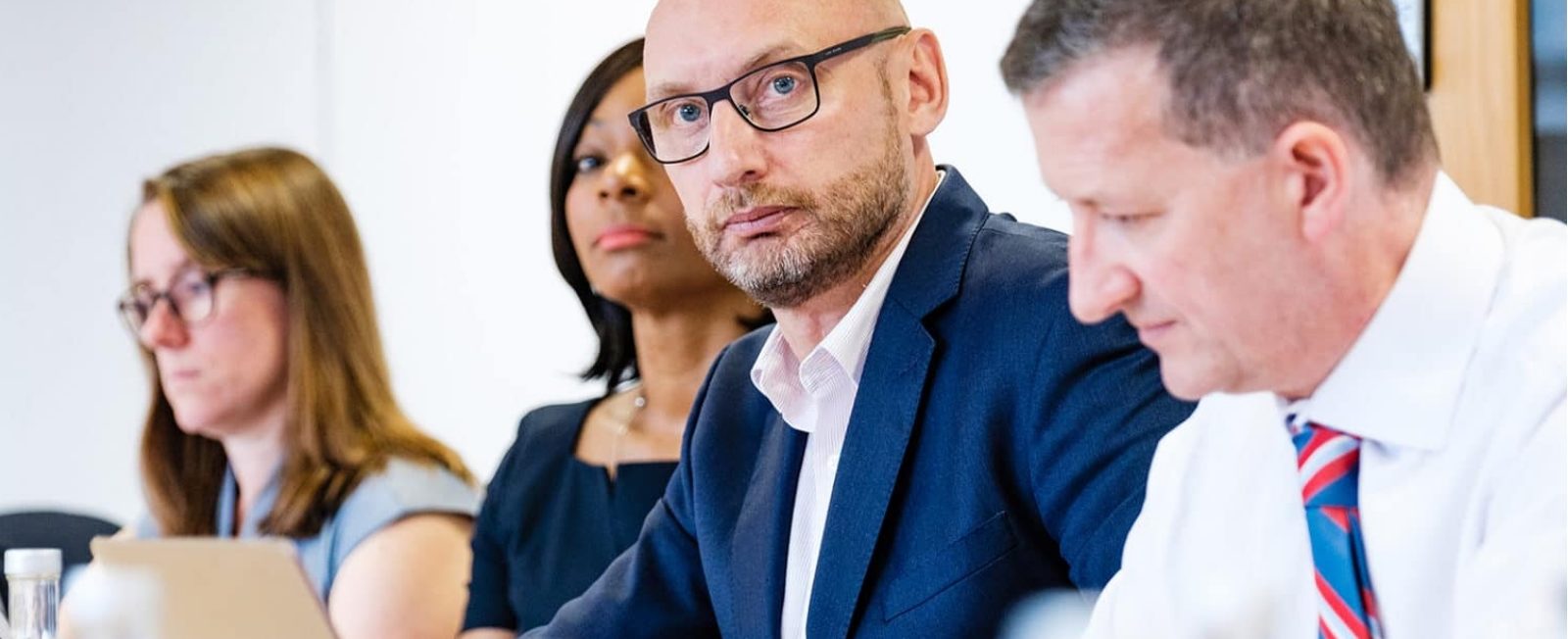Mediation as a means of Improving access to Justice in a Cost-of-Living Crisis.
Excerpt from a speech given by CEDR Chief Executive James South, as part of a panel at the Civil Justice Council National Forum, 17 November 2023.
Lady Chief Justice Carr, in her speech in the opening panel of the conference, set out the following three roles of civil justice:
- Prevention – the system provides the guide rails within which society operates, and therefore can prevent disputes arising.
- Resolution – access to methods of resolving disputes without recourse to the courts.
- Adjudication – where necessary, to provide adjudication via the court system.
In this context it can be seen that alternative dispute resolution (ADR) processes which assist the resolution of disputes, without the need to go to formal adjudication are seen as an integral part of the justice system, and therefore access to them is a key part of access to justice itself.
Before I set out how ADR can assist in providing access to justice, particularly at a time of financial crisis for individuals and organisations, allow me first to summarise the various initiatives in respect of ADR within civil justice, for those who are not familiar with them.
- From Spring next year, the expansion of the current small claims’ mediation service, to become a mandatory scheme of all money and housing conditions and personal injury claims up to £10,000. This is estimated to be up to 100,000 cases per year.
- If this is successful, The Ministry of Justice (MoJ) have already announced that they would consider extending it more broadly in the county court.
- We are currently awaiting a judgment of the Court of Appeal in Churchill v Merthyr Tydfill, which may set aside the current block on judges, in their discretion ordering parties to actually attend mediation, due to the Halsey judgment back in 2004, which held such an action would be inconsistent with article 6 of the ECHR.
- Finally, Part 1 of the CJC report on Pre-Action Protocols published in August of this year, set out a draft general pre-action protocol which provides for ADR to take place as a necessary step under the protocol, further encouraging mediation pre-action.
Access to Justice
So, with all these initiatives further integrating mediation into the justice system, how does this assist access to justice for disputants particularly at the current time when so many are facing a cost-of-living crisis.
Let’s start discussing what we mean by access to justice. All too often lawyers view and discussion surrounding access to justice is exclusively referring to the right to access courts and trial. However, this is too narrow a view of access to justice.
However, when we focused on what disputants want, then a more expansive view of access to justice can be defined.
While of course they want their ultimate right to ask a court to make a determination, for individual disputants what is normally important is getting their dispute resolved in a cost effective and fair way, ensuring they have the opportunity to be heard, and that the resolution meets their commercial and personal needs.
This pretty much sums up what mediation and other forms of ADR can offer to the parties. So, in this sense, access to justice means access to ADR as well as access to the courts and trial.
Therefore, the current moves to integrate ADR more fully into the civil justice system as I set out earlier, is a way of ensuring that parties have access to a resolution process that can meet their commercial, personal, and legal needs without unreasonably impeding the parties’ right to proceed to court proceedings.
Timeliness
Secondly, we know mediations take place within a month, and increasingly weeks or days. Contrast this with the time it takes to take a matter to trial, which from the statistics I have seen is on average 52-61 weeks in the county court, then you can see the benefits of mediation: to disputants who are in financial crisis, who may need the matter resolved, payment of monies, debt rescheduled and/ or commercial relationship retained.
The same applies to costs – agreements can be reached in mediation at a fraction of the cost of taking a matter all the way to trial. At a time when money is tight for individuals and SME’s, getting things resolved more cost effectively via mediation, can be a critical factor in being able to access justice.
I also wanted to draw a link to another theme of today that is the use of technology. CEDR’s statistics show that even two years after the pandemic 50% of cases are still mediated online, and the percentage is even higher for lower value cases. This not only lowers the ancillary costs of engaging in mediation (travel and venue costs), but it also allows parties to feel more comfortable engaging in mediation from the comfort of their homes, thus lowering the barriers to engagement.
Related to this, as more mediations come through the system, providers are developing more sophisticated case management technology to manage cases more efficiently, and this lowers the cost of delivery of mediation both for providers and ultimately the end user.
Enforcement
Finally, in respect of enforcement, a problem in respect of access to justice identified by the Lady Chief Justice – even if you get a judgment, you still may not be able to enforce payment of that judgment. In mediation, we know that because settlement agreements are voluntary, then enforcement is much less of a problem.
Hopefully this sets out clearly how mediation can help disputants get access to justice, particularly during these financially constrained times.
Finally, I would just note three areas which still need further consideration and development to ensure that ADR operates effectively and is a success in providing access to justice.
- Ensuring standards are maintained – with an increase of mediations available, there is a risk that there is a flood of low-quality trained mediators into the market. For this reason, it is important that clear standards are set for mediators operating within the court system. The Civil Mediation Council (CMC) already have a strong standard framework, and work is already underway between CMC and the MoJ in the development of a standards body to develop this standards regime further.
- Legal advice for litigants in person (LiPs)- A related point is ensuring that LiPs are fully able to engage in the mediation process. In respect of unrepresented parties, it is important that they understand their legal rights as a basis for negotiation within the mediation context. I understand that work is currently underway to consider how funding for LiPs to receive such advice, prior to a mandatory mediation session, could be achieved.
- Managing vulnerability in mediation – Finally, in respect to vulnerable disputants being able to fully engage in the mediation process and decide on the settlement, while being protected from undue influence and duress, I would first note that mediators regularly mediate with LiPs and there are specific process measures that can be put in place to ensure enhanced protection for them. Mediators are also able to redress power imbalances and ensure that parties do not feel pressured into making decisions on a settlement. However, perhaps if a mediator is going to mediate in a mandatory mediation context, consideration could be given to requiring increased training for mediators on working with LIP’s and issues around vulnerability etc. This could be provided by training providers as part of a CPD offering, promoted under the auspices of the CMC.
Conclusion
A lot of good work and collaboration is happening amongst all stakeholders to address these issues and I would only reiterate what others have said, that this collaboration needs to go further and deeper.


